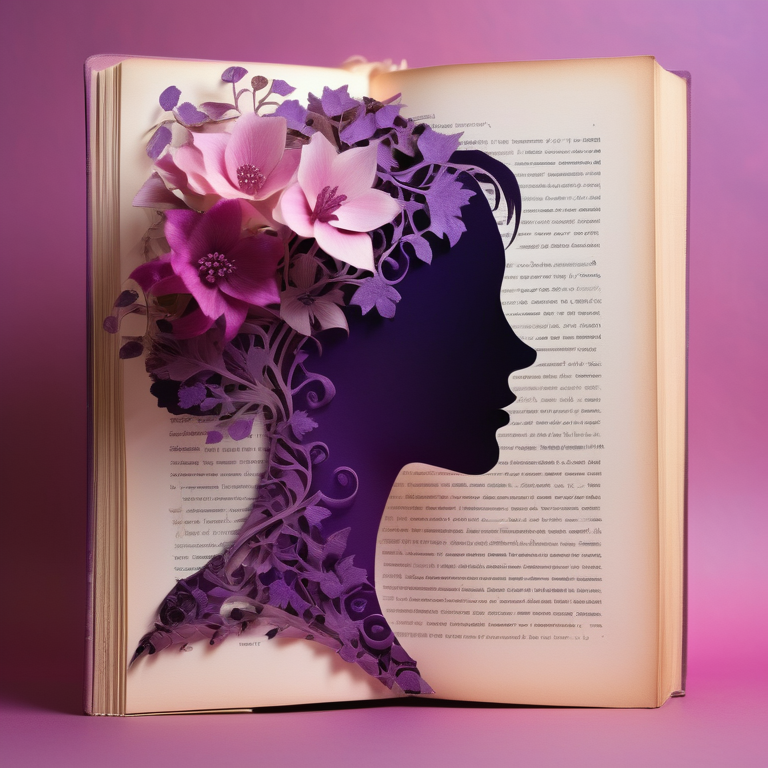The Evolution of Women’s Sexuality in Romance Novels

Key Highlights
- Romance novels have evolved over time, reflecting changes in societal views on women’s sexuality.
- Early romance novels portrayed women as passive and submissive, conforming to societal norms.
- The rise of feminist romance novels in the 20th century challenged traditional gender roles and explored themes of sexual autonomy and expression.
- Modern romance novels have embraced diverse sexual orientations and identities, promoting empowerment and inclusivity.
- The digital age has brought changes to the romance genre, with the accessibility of e-books and the influence of online communities.
- Criticisms and controversies surrounding women’s sexuality in romance novels highlight the need for responsible and realistic portrayals.
Introduction
Romance novels have long been a popular genre of literature, captivating readers with tales of love, passion, and desire. Over the years, these novels have not only entertained but also reflected the changing dynamics of women’s sexuality. From the early portrayals of women as passive and submissive to the modern exploration of diverse sexual orientations and identities, the evolution of women’s sexuality in romance novels has mirrored the evolving societal views on female desire and agency. In this blog, we will delve into the history of romance novels and examine how they have shaped and been shaped by women’s sexuality, including the controversial topic of pornography in the form of mass-market or formulaic romance novels. We will also discuss the impact of these novels on readers’ sex lives and whether they can be considered a form of sexual education.
The Dawn of Romance Novels and the Portrayal of Women
The dawn of romance novels brought with it a portrayal of women that was deeply rooted in societal expectations and norms. In the works of authors like Jane Austen, women were often depicted as passive and submissive, their desires and aspirations confined within the boundaries set by society. These early romantic novels laid the foundation for the exploration of women’s sexuality in literature, albeit within the confines of societal expectations.
Early Depictions of Women’s Sexuality
Early romance novels often portrayed women’s sexuality through a lens of romanticized longing and unfulfilled desires. The female characters in these novels were typically depicted as virtuous and chaste, adhering to societal expectations of femininity. Their sexual desires were often suppressed or only hinted at, creating a sense of tension and anticipation for readers. While these novels provided a glimpse into the complexities of women’s desires, they were largely constrained by the cultural norms of the time. Jane Austen’s works, such as “Pride and Prejudice” and “Sense and Sensibility,” exemplify this early portrayal of women’s sexuality, where sexual desire was often subverted in favor of courtship and marriage.
Societal Norms and Their Influence on Romance Literature
Societal norms and expectations have played a significant role in shaping the portrayal of women’s sexuality in romance literature. Throughout history, the prevailing views on women’s sexuality have influenced the themes and narratives in romance novels. The limited access to sexual education and the stigmatization of female desire have often led to the romanticizing of courtship and marriage in these novels. Additionally, the public attention towards romantic novels has further influenced the way women’s sexuality is portrayed, as authors catered to the popular demand for love stories that conformed to societal expectations. However, as society has evolved and become more open to discussions about sexuality, the portrayal of women’s desires in romance novels has also evolved, reflecting a greater range of sexual autonomy and agency.
Breaking Barriers: The 20th Century Revolution
The 20th century witnessed a revolution in the romance genre, with the rise of feminist romance novels challenging traditional gender roles and exploring themes of sexual autonomy and expression. These novels sought to empower women by portraying them as equal partners in relationships and acknowledging their desires and agency. Alongside the growing feminist movement, these romance novels addressed issues of sexual health and encouraged open conversations about consent, communication, and safe sex.
The Rise of Feminist Romance Novels
Feminist romance novels emerged as a powerful force in the 20th century, championing women’s rights and challenging societal expectations. These novels celebrated female empowerment and sexual autonomy, encouraging women to embrace their desires and assert their agency in relationships. Some key characteristics of feminist romance novels include:
- Protagonists who are strong, independent women with their own goals and ambitions.
- Relationships based on equality and mutual respect, where both partners have agency and make decisions together.
- Exploration of diverse sexual expressions and identities, breaking away from traditional gender roles.
- Themes of consent, communication, and sexual empowerment, promoting healthy and positive sexual experiences.
Through these novels, authors paved the way for more inclusive and empowering narratives that celebrated the diversity of women’s experiences and desires.
Shifts in Sexual Autonomy and Agency in Literature
The evolution of women’s sexuality in romance novels also brought about shifts in the portrayal of sexual autonomy and agency. As society became more open to discussions about sexuality, romance novels began to embrace themes of sexual empowerment and positive sexual experiences. Female characters were no longer confined to passive roles but took charge of their own pleasure and desires, leading to increased enjoyment in their sexual experiences. The exploration of sexual agency in romance novels allowed readers to witness characters who actively pursued their desires, communicated their boundaries, and made informed choices, including the act of intercourse. This shift in narrative empowered readers to view sexual autonomy as a positive aspect of women’s sexuality, challenging the traditional notion that women’s desires should be repressed or subjugated.
Modern Era: Diversification and Empowerment
In the modern era, romance novels have embraced diversity and empowerment, reflecting the ever-evolving landscape of women’s sexuality. Contemporary romance novels explore a wide range of sexual orientations and identities, allowing readers to see themselves represented in the stories they read. These novels promote empowerment by portraying characters who embrace their desires, break away from societal norms, and challenge stereotypes. By diversifying the narratives and characters in romance fiction, authors have created a more inclusive and empowering space for readers to explore and celebrate their own sexual identities.
Exploring Diverse Sexual Orientations and Identities
Contemporary romance novels have become a platform for exploring and celebrating diverse sexual orientations and identities. These novels feature characters who identify as LGBTQ+ and provide readers with a window into the experiences and challenges faced by individuals with non-heteronormative sexual identities. By portraying diverse sexual orientations and identities, authors challenge societal norms and promote acceptance and understanding. These novels not only validate the experiences of readers who identify as LGBTQ+, but also educate readers who may not be familiar with these identities. Through the exploration of diverse sexual orientations and identities, romance novels contribute to a more inclusive and empathetic understanding of human sexuality.
The Role of Consent and Communication in Contemporary Romance
Contemporary romance novels place a strong emphasis on consent, communication, and safe sex. These novels recognize the importance of open and honest discussions about desires, boundaries, and expectations in relationships. By depicting healthy and consensual sexual encounters, romance novels promote a positive understanding of sex and relationships. Authors strive to portray characters who prioritize communication, ensuring that both partners are comfortable and enthusiastic about their sexual experiences. Additionally, safe sex practices, such as the use of contraception and protection, including condom use, are often incorporated into these narratives. Through their portrayal of consent, communication, and safe sex, contemporary romance novels promote a culture of healthy and responsible sexual behavior, including the use of birth control to prevent unintended pregnancies.
The Impact of Digital Age on Romance Novels
The advent of the digital age has brought significant changes to the romance novel industry. E-books have made romance novels more accessible to readers, including the growing community of #BookTok users, who have brought romance books into the mainstream. Gone are the days of romance readers hiding their smutty, bare chest-covered book jackets in their purses while riding the subway. Additionally, social media platforms have allowed authors and readers to connect and engage in discussions about romance novels. The digital age has expanded the reach of romance novels and enabled a wider audience, including romance readers, to explore the diverse narratives and themes within the genre.
E-books and the Accessibility of Erotic Literature
The rise of e-books has revolutionized the accessibility of erotic literature within the romance genre. E-books provide readers with the privacy and convenience of accessing and reading steamy romance novels discreetly on their digital devices. This accessibility has allowed readers to explore a wider range of sexual fantasies and experiences, expanding the boundaries of traditional romance narratives. With e-books, readers can easily search for and discover erotica that suits their preferences, making the genre more inclusive and accommodating to diverse sexual desires. The accessibility of e-books has created a space for readers to explore and celebrate their own unique sexual experiences and fantasies, making erotica a popular and widely accessible subgenre within the romance world.
Online Communities and the Evolution of Reader Expectations
Online communities have played a pivotal role in shaping reader expectations within the realm of romance novels. These digital platforms serve as hubs for enthusiastic discussions centered around the depiction of women’s sexuality in contemporary romance literature. Readers who participate in these online forums are driven by a desire to delve deeper into topics such as sexual expression, agency, and the empowerment of female characters.
The vibrant interactions taking place within these virtual communities highlight a direct link between shifting societal norms and the standards upheld by romance novels. Through engaging in conversations about subjects like sexual health, desire, and intimacy, readers are pushing authors like Quilliam to explore a broader spectrum of themes and perspectives within their works, ultimately shaping the evolution of women’s sexuality in romance novels.
By fostering dialogue that challenges stereotypes and celebrates the positive facets of women’s sexuality in romantic fiction, these online discussions are instrumental in propelling the genre forward. Authors are increasingly encouraged to embrace diverse narratives and viewpoints, ultimately enriching the landscape of romance literature and resonating with a more varied audience.
Criticisms and Controversies Surrounding Women’s Sexuality in Romance
Romance novels have not been without their share of criticisms and controversies. Some critics argue that these novels often romanticize toxic relationships, perpetuating unrealistic expectations and harmful stereotypes. The line between fantasy and reality can become blurred, leading readers to develop unrealistic views of relationships and sexual encounters. While romance novels offer an escape from reality, it is important to critically examine the messages they convey, especially to impressionable college students, and ensure that they promote healthy and responsible attitudes towards sex and relationships.
The Debate on Romanticizing Toxic Relationships
One of the key debates surrounding romance novels is the accusation of romanticizing toxic relationships. Critics argue that some novels portray problematic dynamics, such as possessiveness, control, and lack of consent, as romantic. This portrayal can perpetuate harmful stereotypes and normalize unhealthy behaviors in relationships. It is crucial to differentiate between fiction and reality and recognize the importance of consent, respect, and communication in healthy relationships. Authors and readers alike have a responsibility to critically engage with the content and challenge any narratives that romanticize toxic relationships. By fostering discussions around consent and healthy relationship dynamics, romance novels can play a positive role in shaping perceptions of female sexuality and promoting respectful and empowering narratives.
Balancing Fantasy and Reality: The Authors’ Responsibility
Authors of romance novels have a responsibility to strike a balance between fantasy and reality in their narratives. While romance novels provide an escape from reality, it is important to ensure that the stories being told are grounded in healthy relationship dynamics and respectful portrayals of female sexuality. Authors can challenge traditional gender roles, break away from harmful stereotypes, and promote consent and communication in their narratives. By acknowledging the power they hold in shaping readers’ perceptions, authors can use their platform to contribute to a more inclusive and empowering representation of women’s sexuality in romance novels.
Future Trends in Romance Novels
The future of romance novels holds exciting possibilities with advancements in technology. Artificial intelligence (AI) and virtual reality (VR) have the potential to enhance the reader’s experience by creating immersive and interactive narratives. These technologies can also open doors for more inclusive gender representations, allowing readers to explore different perspectives and identities. As the romance genre continues to evolve, authors and readers can look forward to new and innovative ways of experiencing and engaging with stories of love and desire.
Predictions on the Inclusion of AI and Virtual Reality
As AI and virtual reality continue to advance, they are expected to have a significant impact on the romance genre. AI-powered storytelling can create personalized narratives tailored to individual readers’ preferences and desires, providing a more immersive and engaging experience. Virtual reality can transport readers into the world of their favorite romance novels, allowing them to interact with characters and explore different storylines. These advancements offer exciting possibilities for inclusivity and representation, as AI and virtual reality can cater to diverse sexual orientations, identities, and perspectives. The romance genre is likely to embrace these technologies, pushing the boundaries of storytelling and creating new opportunities for readers to connect with the characters and narratives they love.
Anticipating Further Breakthroughs in Gender and Sexuality Representation
The evolving landscape of gender and sexuality representation in romance novels is expected to continue progressing in the future. As societal attitudes continue to evolve, authors have the opportunity to explore and celebrate a wide range of gender identities and sexual orientations. Breakthroughs in representation can challenge traditional norms and create more inclusive narratives that resonate with readers of diverse backgrounds. By embracing intersectionality and promoting authentic portrayals, romance novels can contribute to a greater understanding and acceptance of gender and sexual diversity. As readers demand more diverse and inclusive stories, authors will be prompted to push the boundaries and explore new avenues for representation in the romance genre.
Influential Authors and Landmark Novels
The romance genre has been shaped by influential authors and landmark novels that have left a lasting impact on the genre. These authors have challenged societal norms, pushed boundaries, and paved the way for greater inclusivity and representation. Their works have sparked conversations, inspired readers, and shaped the evolution of women’s sexuality in romance novels. From the pioneers who changed the game to the must-read novels that have shaped the genre, these authors and their contributions continue to resonate with readers and shape the future of romance literature.
Pioneers Who Changed the Game
Several authors have emerged as pioneers in the romance genre, challenging norms and revolutionizing the portrayal of women’s sexuality. Authors like Jane Austen, Nora Roberts, and Jennifer Crusie have left an indelible mark on the genre with their compelling narratives and complex female characters. Their works paved the way for greater agency, autonomy, and diversity in romance novels. These pioneers dared to explore themes of love, desire, and sexuality in ways that resonated with readers and challenged societal expectations. Their contributions have been instrumental in shaping the landscape of women’s sexuality in romance novels and continue to inspire and influence authors and readers alike.
Must-Read Novels that Shaped the Genre
Several novels have emerged as must-reads in the romance genre, shaping the narrative and representation of women’s sexuality. These landmark novels have challenged norms, pushed boundaries, and garnered widespread acclaim. Some notable examples include “Pride and Prejudice” by Jane Austen, “Outlander” by Diana Gabaldon, “Fifty Shades of Grey” by E.L. James, and other must-read romance books that have captivated readers with their powerful depictions of love, desire, and relationships. These novels have not only entertained but also sparked important conversations about female desire, agency, and sexual expression. They have become touchstones in the genre, inspiring authors and readers to explore and celebrate the complexities of women’s sexuality. These must-read novels continue to shape the genre and serve as a testament to the power of storytelling in reflecting and shaping societal views on women’s sexuality.
Conclusion
The evolution of women’s sexuality in romance novels reflects societal shifts and women’s empowerment over the years. From early depictions influenced by societal norms to the rise of feminist literature and diverse representations, romance novels have depicted a range of sexual autonomy and agency. As we move into the digital age, e-books and online communities shape reader expectations. While criticisms exist, the future holds promises of AI integration and enhanced representation. Influential authors continue to challenge boundaries, shaping the genre. Share this journey of empowerment on social media to celebrate the evolving narratives of women’s sexuality in romance novels.
Frequently Asked Questions
How have romance novels influenced societal views on women’s sexuality?
Romance novels have played a significant role in influencing societal views on women’s sexuality. Through their narratives, romance novels have challenged traditional gender roles, promoted female empowerment, and showcased diverse sexual orientations and identities. These novels have contributed to a more inclusive and nuanced understanding of women’s desires and agency, shaping and reflecting changing societal attitudes towards women’s sexuality.
Can romance novels be feminist?
Yes, romance novels can be feminist. Many contemporary romance novels celebrate female empowerment, challenge traditional gender roles, and highlight themes of sexual autonomy and consent. These novels provide a platform for diverse representations of female characters and offer narratives that embrace feminist values and promote women’s agency and empowerment.
What role do readers play in shaping the portrayal of women’s sexuality in romance novels?
Readers play a significant role in shaping the portrayal of women’s sexuality in romance novels. Their demand for diverse and inclusive stories influences the narratives and representation in the genre. Authors often listen to readers’ feedback and strive to create narratives that resonate with and empower their audience.
How do romance novels address issues of consent and sexual autonomy?
Romance novels address issues of consent and sexual autonomy by incorporating narratives that prioritize open communication, respect for boundaries, and the exploration of consensual sexual encounters. These novels promote a culture of healthy and responsible sexual behavior through their portrayal of respectful and empowering relationships.
What future developments can we expect in the romance novel genre regarding women’s sexuality?
In the future, the romance novel genre is likely to continue exploring and celebrating women’s sexuality with greater inclusivity and representation. We can anticipate more diverse narratives, innovative storytelling techniques, and the incorporation of emerging technologies such as AI and virtual reality, offering readers more immersive and engaging experiences.





